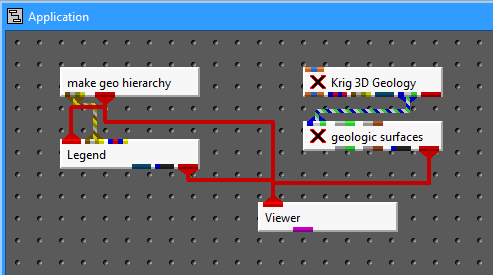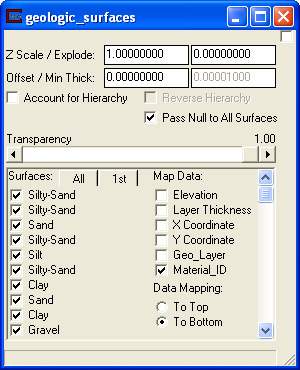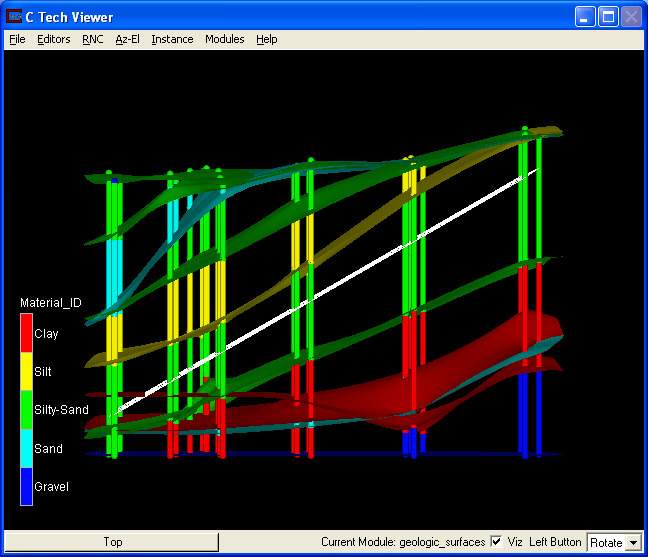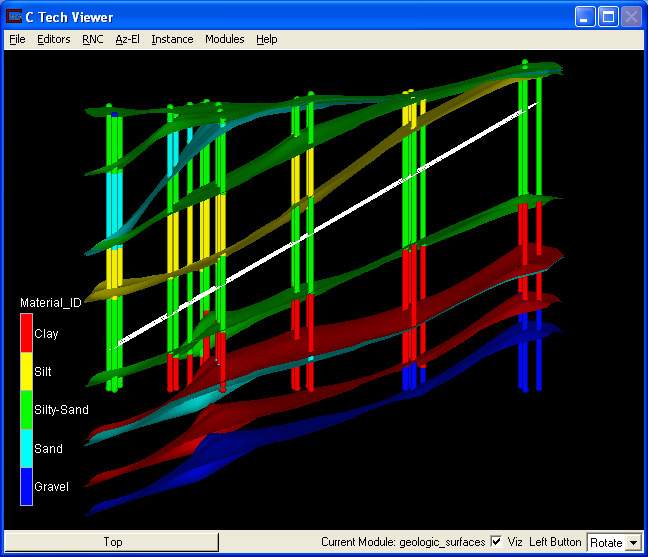
Lets visualize our final product, first instance both the Krig_3D_Geology module and the geologic surfaces module and connect them to the network as shown below.

In Krig_3D_Geology select the file "data\pregeology\dipping_strata_lens_pgf_created.gmf" and hit accept. Notice this is not the file you created in the previous workbook sections but a precreated file which will work in the DEMO mode of EVS. If you are running a licensed copy of EVS, you can use the file we created in the previous section.
In the geologic_surfaces module hit the All button to display all of the layers. Set the Z Scale to 1.0, turn off the Account for Hierarchy, and turn off all of the Map Data components except for Material_ID.
Your control panel should look like the one below:

Open up the Az-El panel on the Viewer and set the Elevation to 1 (this allows us to see the bottom surface). You should see the image below

Notice how the second clay surface as it approaches its minimum x extent tends to rise through several of the surfaces above it. This is because the surface only has data defined in the borings on the left of the screen, so kriging it will cause it to approach the mean of elevation as it moves into lower x coordinates.
Next in Krig_3D_Geology select the file "data\pregeology\dipping_strata_lens_pgf_created.geo" and hit accept. Notice this is not the file you created in the previous workbook sections but a precreated file which will work in the DEMO mode of EVS. If you are running a licensed copy of EVS, you can use the file we created in the previous section.
You should see the image below:

Notice how the surfaces that contained borings which were dropped from the gmf file follow the topology of the surface above them in the undefined regions. This difference occurs because the default option in Krig_3D_Geology krigs the data in a thickness space when loading a GEO file. This causes the lithology to be honored across areas with less data if you have clean layers. This is the benefit of creating and using a GEO file over a GMF file.
© 1994-2018 ctech.com